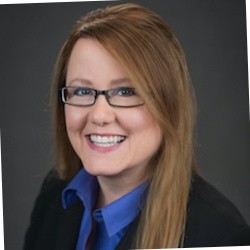One-on-one with…Lisa Newcomb
Lisa Newcomb, executive director of the Empire State Association of Assisted Living (ESAAL), works in a state that dedicates an entire month, September, to recognizing assisted living (AL) communities. The association’s more than 280 members serve more than 22,000 residents in New York, a state in which it is estimated that more than 2 million seniors will need some form of long-term care by 2015. Newcomb recently spoke with Long-Term Living about AL initiatives in New York and how they might benefit efforts in other states.
What is the approach to assisted living in the state of New York?
Assisted living came about in response to an expressed consumer desire for a home-like environment that respects the dignity and independence of a resident as well as has the ability to meet their personal care needs as they age. ESAAL’s New York state-licensed providers have listened and are committed to not only achieving this standard but surpassing it.
In New York, ESAAL has worked diligently with state policymakers and regulators over the past decade to develop protections for AL residents, ensuring they reside in a secure, nurturing environment. All state-licensed residences must comply with comprehensive regulations enforced by the New York State Department of Health. The core of these principles:
- Strict admission/retention criteria;
- Obtaining documentation from the resident’s primary care physician that the resident can be safely served in the AL environment;
- Developing an individualized service plan describing in detail how they will address the resident’s needs; and
- Submitting to comprehensive and regular review by New York State Department of Health surveyors to ensure they meet the more than 1,000 regulations.
Those licensed residences that do not meet these state regulations are subject to stiff fines and the possibility of closure.
Do you see New York’s AL-related initiatives as providing direction that other states can follow?
Yes, absolutely. Although I should preface that by saying that assisted living has evolved differently in the states, and just as assisted living is unique within each state in that there is no “one-size-fits-all” residence, so too there are differences from state to state, and the frameworks are based on the needs and characteristics of the seniors living there. So we should always be careful not to try to homogenize simply by habit.
Having said that, states can and do teach each other and provide direction as this senior living option grows and continues to change based on the needs and preferences of the senior. Through its legislature, Department of Health and ESAAL, as the largest statewide association representing assisted living only, New York state has been one of the country’s leaders in this area.
Since the 1970s, licensed adult care facility providers have worked side by side with the New York State Department of Health to develop regulations to maximize the safety of residents and the quality of services provided. In 2004, through collaboration between the state regulator, consumer advocates, ESAAL and other stakeholders, New York’s lawmakers adopted landmark AL reform legislation. The law establishes a process for licensing of different levels of assisted living, enhanced oversight and additional resident rights. Known as the Assisted Living Residences law (part of the Public Health Law), it built on the existing licensure framework in New York to afford seniors additional consumer protections related to proper disclosure, ensuring that each person has the opportunity to contribute to, and benefit from, their individualized service plan, and allowing seniors to age in place as their needs grow rather than having to move to a nursing home.
New York’s pyramid approach of providing layered services with corresponding certification can serve as a model for other states to follow. It provides flexibility for seniors, some who may want to live in a residence where people are more independent and others who want the ability to receive more services so that they age in place as their needs increase. Moreover, it provides flexibility for AL providers, some that have the capabilities, expertise and desire to provide more enhanced and skilled services, and others that wish to operate under the socially based model that is the foundation for assisted living in this state. Seniors have choices about where they want to live.
Also, critically, this approach highlights the importance for seniors to understand whether they are living in a residence that is licensed by the state regulating agency. Without licensure, important resident protections are not guaranteed. The consumer should inquire as to what protections such an unlicensed setting will or will not offer them.
Have any states used New York’s state regulations as a model for themselves?
New York’s Assisted Living Residences law is relatively new (2004). When reviewing their current AL framework to determine whether changes are needed, however, states often look to what other states are doing. It is my understanding that Rhode Island is in the process of making changes that will allow AL providers to offer more services, and it is likely that they are looking at New York’s enhanced licensure as well as those of other states. We all want to learn as much as we can from each other.
What can communities do to ensure compliance with national and state laws and regulations while providing optimal care?
In addition to the comprehensive regulatory framework described above? Most importantly, training, training and more training. Training should be ongoing, relevant and supportive to the staff person’s job and his or her personal experience.
Also, many AL communities have quality improvement processes that not only help them ensure that they are complying with regulations but also measure resident and staff satisfaction. It is a systematic (but does not need to be complicated) review of what is happening and how happy people are, and it helps identify issues before they become big problems.
How can AL communities communicate their value?
The best way for an AL residence to demonstrate value is to invite consumers and their families in [to] experience life in their community. People can see the level of social activity, join with residents to have a meal and observe staff’s interaction with residents as well as the various kinds of support and assistance that they provide. They know value when they see it, and when the experience is a good one, positive word-of-mouth happens. While there is certainly also a place for traditional methods such as advertising and hosting community events at the residence, it is the consumer’s direct, personal experience that makes the lasting impression.
See other content by this author here.

Lois A. Bowers was senior editor of I Advance Senior Care / Long-Term Living from 2013-2015.
Related Articles
Topics: Articles , Executive Leadership , Facility management , Leadership , Regulatory Compliance










